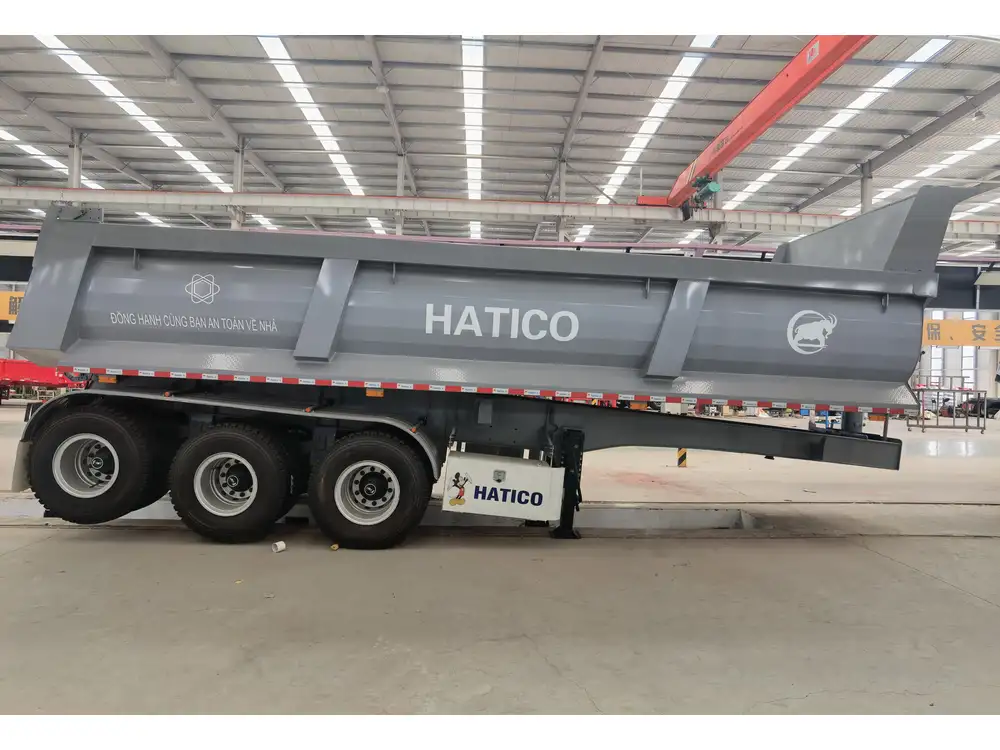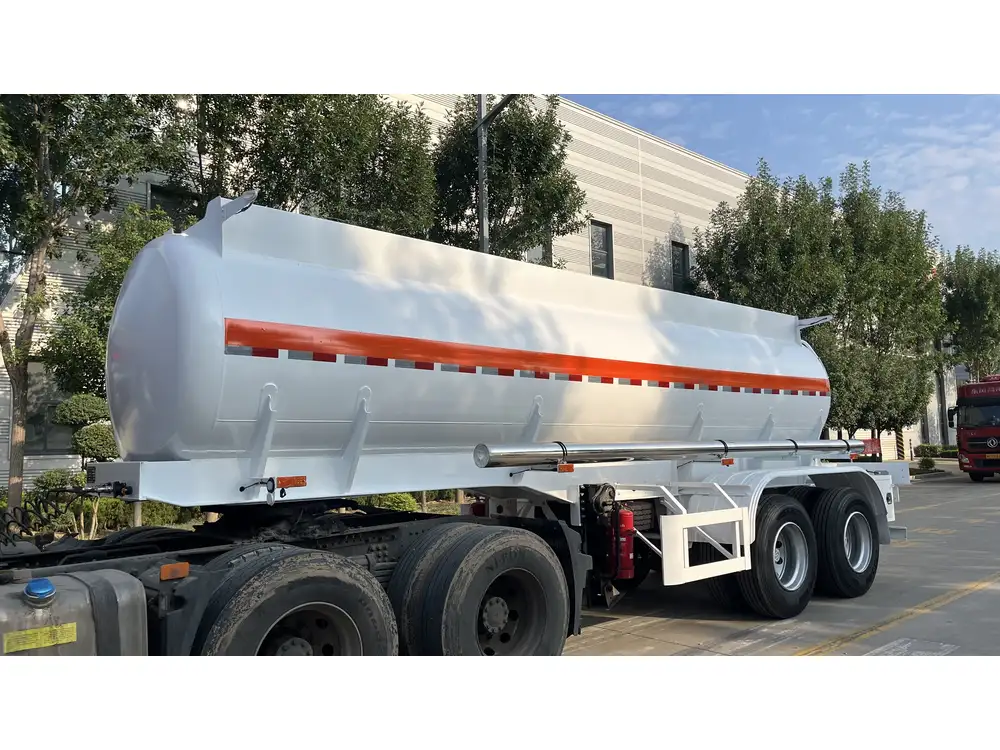Introduction to Semi-Trailer Bed Heights
Semi-trailers, essential components of the trucking industry, vary significantly in specifications based on their intended use and design. One critical aspect that transport companies must consider is the height of the trailer bed. The bed height, or deck height, refers to the vertical distance from the ground to the top of the trailer’s loading platform. This measurements are crucial, influencing loading and unloading operations, compatibility with various vehicles, and compliance with regulations.
In this guide, we delve deep into the intricacies of semi-trailer bed heights, examining their implications, the averaged statistics, and much more. By the end of this article, you will have a comprehensive understanding of semi-trailer bed heights and how these figures can impact logistics and transportation operations.
The Standard Bed Heights of Semi-Trailers
While bed heights can vary widely depending on the trailer type and manufacturer, there are common standards that industry players should be aware of. Most commonly, semi-trailers exhibit bed heights ranging from 48 inches to 56 inches.
| Trailer Type | Average Bed Height | Typical Use |
|---|---|---|
| Flatbed Trailers | 48-54 inches | General freight, heavy loads |
| Dry Van Trailers | 48-53 inches | Household goods, general goods |
| Refrigerated Trailers | 52-55 inches | Perishable goods, temperature-sensitive cargo |
| Lowboy Trailers | 18-24 inches | Heavy equipment transport |
| Step Deck Trailers | 36-48 inches | Oversized loads |

Variability in Bed Heights
The variability in semi-trailer bed heights stems from several factors:
- Manufacturing Specifications: Different manufacturers may use distinct building materials and methods, leading to variations.
- Intended Use: Bed heights are predominantly influenced by the types of goods a trailer is meant to carry. For example, a flatbed trailer designed for heavy equipment will often have a lower height to facilitate loading.
- Regulatory Compliance: Organizations may adjust trailer specifications to comply with regional and national regulations regarding height and overall dimensions.
Understanding these variations can help operators select the most suitable semi-trailer for their specific needs.
Importance of Bed Height in Logistics
The height of a semi-trailer’s bed can significantly influence several aspects of freight transport. Here are key considerations businesses should take into account:
1. Loading and Unloading Efficiency
The bed height directly impacts the ease with which goods can be loaded and unloaded. A higher bed may necessitate the use of additional equipment like forklifts or cranes, potentially slowing down operations and raising costs. Conversely, trailers with lower beds might enhance efficiency, allowing simpler access to truck cargo.

2. Compatibility with Equipment
Many loading docks and transfer points are designed with specific height requirements. A mismatch between the dock height and the trailer bed height can lead to logistical challenges. Ensuring that the correct height is matched with the operational facilities is essential to prevent delays and additional costs.
3. Weight Distribution and Safety
The height of a trailer bed can affect how the weight of the cargo is distributed across the vehicle. A higher center of gravity (due to a tall trailer bed) might lead to stability issues, especially when making turns or navigating uneven terrain. Fleet managers must consider bed height to ensure safety during transport.
4. Compliance with Transportation Regulations
Transportation regulations can dictate the allowable height of vehicles for safety reasons. In many jurisdictions, regulations enforce maximum vehicle heights, correlating not only to the physical road infrastructure but also to safety considerations.

How to Determine the Ideal Semi-Trailer Bed Height
Selecting the right bed height for a semi-trailer involves evaluating several factors:
Type of Cargo
The characteristics of the cargo being transported should be the primary consideration. For example:
- Bulk Freight: Higher bed trailers often accommodate bulk or oversized loads that require more vertical space.
- Standard Palletized Goods: A standard height often suffices, promoting efficiency in loading and unloading.
Loading Equipment
Assess the equipment you plan to use for loading and unloading. The selection of a trailer bed height should facilitate the use of these tools without compromising safety and efficiency.

Regulatory Requirements
Always check local and national regulations to ensure your selected trailer complies with legal limitations, including bed height restrictions.
Fleet Management Strategies
For coherently analyzed fleet operations, keep in mind the bed heights of trailers utilized within the fleet. Evaluate the compatibility with existing logistics systems to ensure operational efficiency.
Common Questions Regarding Semi-Trailer Bed Heights

What are the consequences of improper bed height selection?
Choosing the wrong trailer bed height can result in:
- Increased Operation Costs: Additional equipment for loading and unloading increases expenses.
- Inefficiencies: Discrepancies in docking facilities can lead to increased wait times and operational delays.
- Safety Issues: Higher center of gravity can compromise stability and safety, leading to accidents.
How do you measure the bed height of a semi-trailer?
Bed height is conventionally measured from the ground to the top of the trailer’s floor. Complimentary features like ramps can also alter the effective bed height during operations.
What are the bed height regulations in the U.S.?
In the United States, the law generally limits semi-trailer heights to 13.5 feet (162 inches), but specifics can vary. Checking with local laws ensures compliance and enhances operational efficiency.

Is there a standard bed height for specific types of trailers?
While general standards exist, particular needs and specifications define unique heights. For example, refrigerated trailers might have slightly heightened beds for better airflow around the cargo, whereas flatbeds might prioritize a more uniform 48 to 54-inch height.
What trailer modifications can affect bed height?
Modifications, such as air suspension systems or changing to larger tires, can raise or lower the overall bed height. Careful consideration of these modifications can refine a trailer’s compatibility with your operational requirements.
Conclusion: Elevating Your Understanding of Semi-Trailer Bed Heights
Understanding the bed height of semi-trailers is not merely a matter of knowing numbers; it is an intricate aspect of logistics that influences loading efficiency, safety, and regulatory compliance. By considering the implications of bed height on various types of cargo and operations, transport companies can make informed decisions to enhance performance and safety.
Whether you are selecting a new semi-trailer or analyzing your fleet’s performance, being aware of these factors positions you to optimize your logistics and ensure that your operations run smoothly. With detailed knowledge and strategic planning surrounding semi-trailer bed heights, businesses can excel in transportation efficiency and maintain a competitive edge in the industry.



